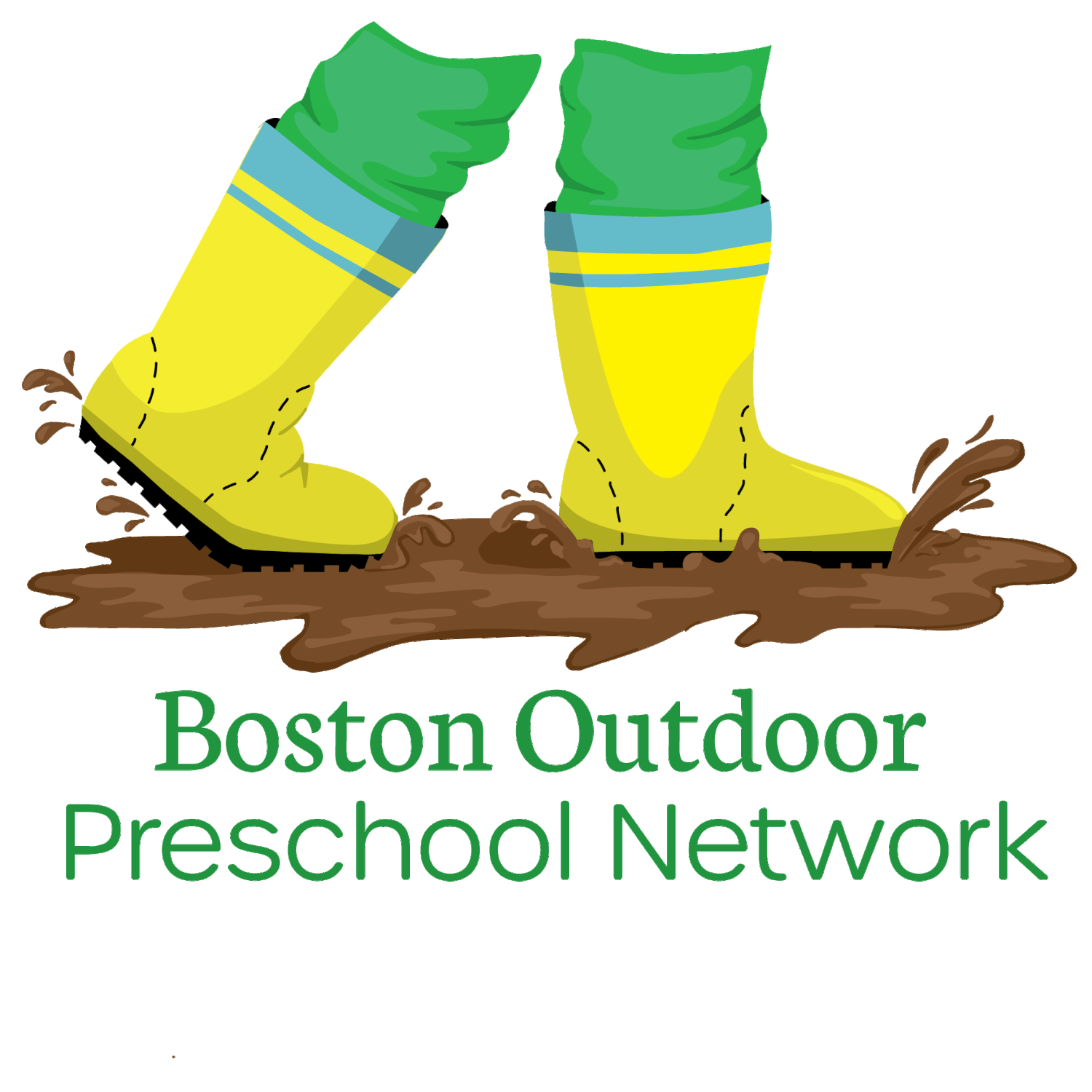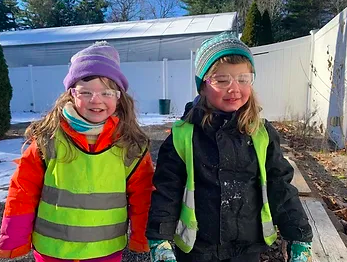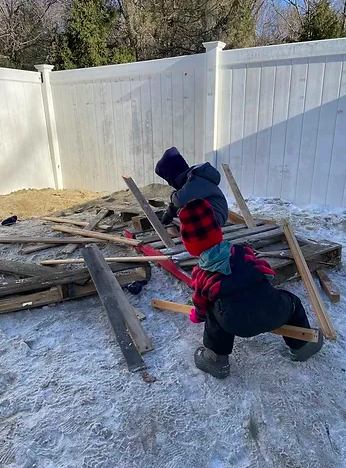A Child's Tale of the Hammer & Nail: A Lesson in "Risky Play" Teaches School Preparation Skills
By Lu Agosti, whose love of nature and child-directed play inspires groups of BOPN children to resiliency, creativity, and growth
At Boston Outdoor Preschool Network, we use the natural landscape as our classroom and our inspiration; we develop our lessons through observing how the children interact with each outdoor space. With natural spaces comes inherent risk; at outdoor school we embrace daily risks as an essential ingredient in whole child development.
It is important to distinguish developmentally appropriate risk - where there is the possibility of failure and manageable negative outcomes like a scrape, or a startle - vs. hazard, which is inherently dangerous and to be avoided. Allowing children to take healthy risks in the context of careful adult planning and supervision can benefit them in so many ways, including increased confidence, persistence, and better awareness of their own limitations.
Did you know that "risky play" activities like hammering a nail can help children build the muscle control, coordination, and focus needed for writing? In our mixed-age preschool class, because we know and have been witness to such benefits, we encourage children to take mitigated risks consistently. Risky play shows children that it is okay to fail. We often view failure and frustration as negative, but as children are more exposed to it, they learn to persist and build resiliency.
There are 8 categories of risky play that children are naturally exposed to in an outdoor environment. These were defined by Ellen Sandsetter, a Norwegian researcher:
1. Play with heights
2. Play with speed
3. Play with tools
4. Rough and tumble play
5. Play with elements
6. Play with a chance of being lost
7. Play impact
8. Vicarious play
We explored several of these types of play already within our classroom, and then introduced play with tools. We began by hosting a safety lesson with the tools present to further solidify the youths’ understanding. As with everything in our classroom community, we began with agreements.
The prompts for this process were:
• What is wonderful about using hammers?
• What are some things we need to be careful of when using hammers?
• Where can we use tools?
• What can we use hammers for?
We gathered together as a class to go over safety guidelines. The children gave us ideas on how to stay safe! “Safety glasses for our eyes!,” “not hitting our fingers,” and “not being silly with tools.”
Once these agreements were established we created a visual reminder to post in our designated tool area. Then we dove in and started off the week with use of wooden mallets and exploring force, safe/ responsible use and lots of scaffolding for the use of real hammers. There was a special space sectioned off with cones where only two students and a teacher were allowed. The class did a phenomenal job of waiting. It’s so hard when there’s a new activity but every person waited calmly for their turn or engaged in play with the rest of the group. I could hear a few riveting rounds of hide and seek from around our adventure spot.
Groups of two entered the tool area and put on their safety goggles. There were all different sizes of nails, some with big heads and some that were tiny. This allowed the preschoolers to observe the force that it took for each nail. It was also a challenge for their hand eye coordination as they aimed for a tiny nail head. I gave examples of how to hold the hammer and children tried their own methods as well. There was a lot of wondering, which is the first part of our scientific process. “I think it will go all the way down” one child said as he worked on hammering a big nail into a board. We make many hypotheses throughout our days exploring and love to review what we have learned to conclude these lessons!
We continuously craft safety routines and awareness with the children to prepare them to safely navigate through the landscape. This serves as a collaborative policy that we often revisit throughout the year. We want all voices to feel empowered and for everyone to feel safe. The best way we can do this is to meet everyone where they are. These risk opportunities will be available to all children but never forced. Each form of risky play comes with its own developmental benefits and over time children will reach these milestones at their own pace and in ways that we can not predict. That is the magic of learning with nature.



